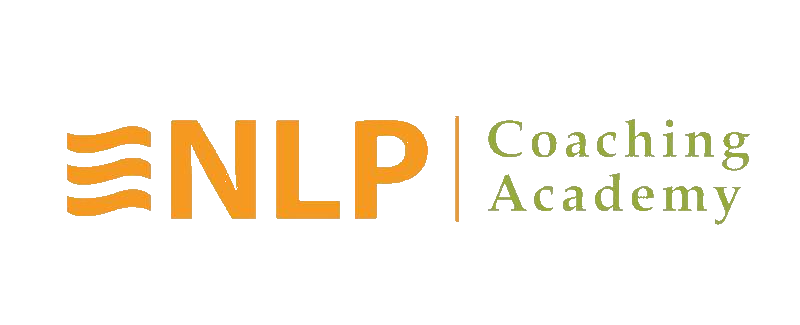Top 10 nlp techniques
NLP techniques

In our last blog post (Do I Want To Be A Professional Executive Coach?), we met two Executive Coaches who worked wonders with their clients, transforming their lives exponentially. I know what you’re thinking: “How did they do that?!” Like any great magician, the key is using simple tools that produce extraordinary results in business and life. Best NLP Techniques or simple tools are an absolute must for someone who is looking to know how to become a successful Life Coach/Executive Coach/Leadership Coach/Business Coach/Entrepreneur Coach ~ They need to be in your drive (in your mind or in your notes). If you are searching for top NLP techniques, here are the top 10 NLP techniques (Generally must be taught in all NLP Practitioner programs) that will propel you from being a Good coach to becoming a Great coach, and are vital for an NLP Practitioner. If you are a Life coach and want to get an overview of which NLP tehniques are useful for coaching, and are looking for NLP techniques for coaches, then read further. Stick around to the end regarding Best NLP techniques – You will get to know about a secret (no peeking)!
Top 10 NLP Techniques
1.Meta Model Questioning
Coaching is about powerful communication. The best communication (ergo, the best coaching) is all in the questions. Ask the right questions and the other person (your client, your partner, even yourself) is immediately propelled to look at their map of the world with new eyes.
The NLP Meta Model is a set of language patterns that pays emphasis on the deletions, distortions, and generalizations that occur in everyday language use. We cause many of our problems with our unconscious use of language, especially when talking to ourselves. Asking ‘magic questions’ helps pinpoint what problems there are and to immediately look for their solutions. When it comes to NLP techniques, this is on top of the list of top 10 NLP techniques, as this enables a coach to develop powerful questioning skills. Meta Model is more than an NLP technique, as this is an NLP linguistic model for asking clean questions, and breaking clients deletions, distortions, and generalizations of thinking, and enabling them to experience a cleaner thinking, real time breakthroughs while having a conversation with an NLP Practitioner or an NLP Coach. If you want to take your coaching game to next level, learn NLP Meta Model. If you are a coach, and are looking for NLP techniques for coaches, then Meta Model is where you can start.
2.Modelling
“It’s all well and good to identify what needs to be done, but how does one go about doing it?” If you think that it’s a lot of hard work to figure out how to achieve excellence, you may have overlooked one important fact. Somebody out there has already practiced and demonstrated the very skill you are looking for. In fact, the very basis of NLP is in “modelling” – somebody who does it better than you currenhttps://nlpcoach.in/how-can-we-change-our-beliefs/tly are doing. One of the definitions of NLP is, ‘NLP is about Modelling Excellence‘.
So, don’t re-invent the wheel. If you want to be a better coach or your client wants to be better at a certain skill, get yourself a genius! Capture the astonishingly effective patterns of their unconscious such that a template or blueprint of this excellence can be generated, and then go get ‘em. There are different ways to model using NLP. A simple example of modelling is a child replicating behaviours of adults. Child is fascinated by what is happening around them, and unconsciously picks up the behaviours (verbals and non verbals) from their environment. Same way if you want to learn a skill from someone a simple way to model is to start with observing what the person is doing (external behaviour). To get to the heart of modelling you will have to understand what beliefs, values, internal strategies are creating that particular skill, which is based on NLP modelling questions, and how do you unpack those strategies, and learn. To keep it simple, start by observation, and if you more keen to learn NLP modelling, read NLP modelling books, and you can learn few ways to model a skill.
3. New Behaviour Generator
“Okay, I have a model and studied him inside out. Now what?” In order to install their strategy into your life permanently, you need to see the biggest truth of reality – YOU are the director of Your Life! And this is literally an NLP tool you can use. As the director, you get the actor (viz., you) to behave exactly as you want. Generate automatic changes in your behavior by visualizing yourself doing what you know will lead to better results. (And the Oscar goes to…)
This is a basic tool for all good coaches. From other top 10 NLP Techniques, this one stands out. This strategy is at the heart of mental rehearsal. Excel at guiding your clients jump into their new world in their mind’s eye, and they will respond wonderfully in their outer world. Superstar of top 10 NLP techniques. One of the Best NLP techniques for Behaviour change. NLP New behaviour generator is based on NLP modelling, and this is a pure observation based technique, and then later on you embody what you observe, and practice until the new behaviour that you want to learn becomes a habit. If you are looking for Behaviour change techniques then this needs to be part of your toolkit ~ NLP techiques for coaches.
4. Re-imprinting
Have you ever had that feeling when you are really raring to go, and instantly a deep fear sets in? “What if things go wrong?” is common anxiety shared by even those who you think are most successful and it is generally rooted in one’s past. We are all imprinted with various experiences throughout life. They act as a template for various situations, and despite all our preparation, we continue to respond from a place of our past failures.
Part of re-imprinting is guiding the client to reinterpret their experience of an event. We may not be able to change the past, but we can change the way that we feel about it. And we can certainly change the way that the past affects us today.
5. Changing Limiting Beliefs
Along with the rather messy experiences of life, seated deep in our psyche are limiting beliefs that we have carved out of our lives. Sometimes, we don’t even notice them and that is when they are strongest, sabotaging our every activity without our knowledge. Limiting beliefs prevent you from seeing opportunities and maybe even discourage you from trying at all. If you want to explore the power of NLP techniques, then you must spend time to learn NLP Belief Change process. There are specific patterns on NLP belief change. To explore more, read a simple NLP belief change process, if you are interested to know how can we change out beliefs using NLP?
Anything you say to yourself to justify why it isn’t working out for you is a limiting and erroneous belief. Remind your clients that the single most significant difference between the ‘go-getters’ and the ‘procrastinators’ is their belief in themselves. Our beliefs and expectations shape our perceptions and (through time) the results we get in life.
6. Memory Dissociation
Changing one’s life for the better will invariably bring up the messy bits of the past. All those past hurts and disappointments that have not been digested will regurgitate themselves, crying for attention. It is always essential to work on these memories as they come up during the coaching session.
Invariably, we tend to re-live memories as an actor within them. The disadvantage of associating into negative experiences is that you won’t access the learning from them. Your clients need to realize that negative experiences, just like the positive ones, occur only for the reason that we’re meant to learn certain lessons from them. These lessons make us stronger and more mature.
7. Parts Integration
It is generally around this phase that the habit of procrastination rears its head. “I know I have to write this blog; I’ll get to it in five minutes…” “I know I have to go to the gym; I’ll go tomorrow…”
‘Parts’ are values and beliefs in your life that seemingly conflict with one another – one part of me knows I have to write, the other wants to spend five more minutes trolling Facebook. But, the thing is that they are both there for a positive intention, and only seem to get a little confused along the way. You will always find that even seemingly diametrical opposites such as ‘Freedom’ and ‘Security’ have the same highest positive intention – a feeling of being at peace. This tool can also be used when making the big decisions of life, “Should I keep my job or quit and take up birdwatching?” If you are looking for the best NLP techniques for internal conflict with respect to choices, then this one stands tall in that space.
8. Fast Phobia Cure ~ The jewel of NLP techniques
“Yay, I got that sale and just have to close it by meeting the client. But I CANNOT take the elevator! Walls closing in… can’t breathe…” Whoa, relax! The NLP Fast Phobia cure works by allowing the traumatized individual, whilst in a safe relaxed state, to reprocess a traumatic event and discharge it completely. The king of Best NLP techniques when it comes to Phobia removal.
It is also known as the ‘Rewind Technique’ as it involves speedy rewinding of the video of the event, disconnecting any associated feelings. Rather than continually activating a terror response to the stimulus, you now feel relaxed and calm. As most of these problems begin in the mind, the solution exists there as well. Another class in our list of top 10 NLP techniques.
9. Circle of excellence
As we keep working on the negative experiences and beliefs, building positive states of being is essential. The ‘Circle of Excellence’ is a form of ‘Anchoring’ in NLP enabling you to get yourself into the right frame of mind and being, wherever and whenever you want. When guiding your clients, remember these 3 basic steps:
-
- Know how you want to feel – Bring up memories of how you were in the past when you had experienced the desired state.
- Design a ‘Circle’ that works as your anchor – Visualise a circle in front of you and bring up the memories in Step 1. Make it come alive and step into your Circle.
Whenever you need this state of mind or being, just take a step forward into your ‘Circle of Excellence’.
10. T.F.A.R
We do everything in life twice – once in our inner world, and again in the outer world. The process starts with a Thought, which creates a Feeling that propels Action to Achieve Results. Sometimes when someone already believes they can achieve something in the inner world, all that needs to be addressed is taking the right action needed to get where they want.
See your destination as a vividly colored snapshot always in front of you. “What Thoughts, Feelings, and Actions did I take when last I had exceptional results? How do I apply the same to reach my new destination?”
A secret about the top 10 NLP techniques
Now, here’s the secret I promised: The best coaches don’t just use these top 10 NLP techniques/ Best NLP techniques for their clients only, they use them first with themselves!
See your highest destiny straight ahead. Hear your inner voice, “Now, that would be nice!” Smile at the vision and jump right in.


